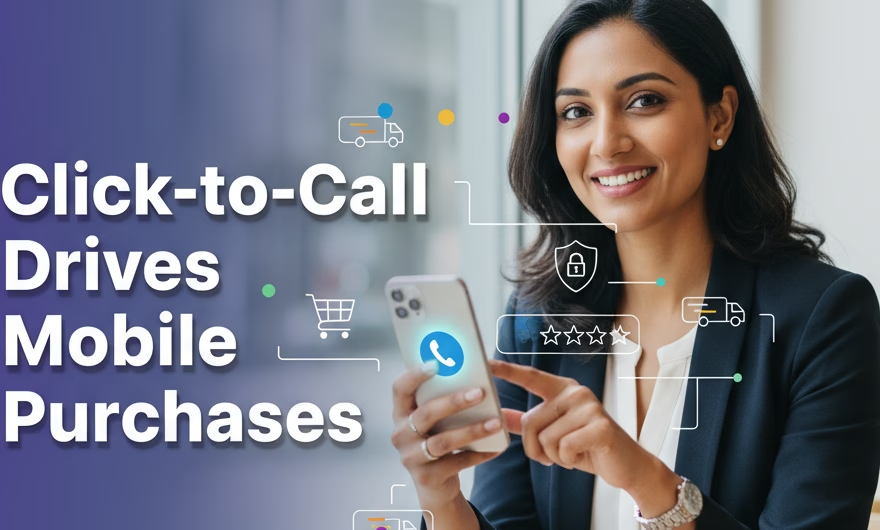Mobile Commerce: A Colossal Shift in Consumer Behavior
Mobile commerce has become the default path to purchase for many shoppers, fundamentally reshaping how people discover, evaluate, and buy. In today’s Mobile Commerce Consumer Behavior landscape, customers expect immediacy, simplicity, and a seamless experience right from their smartphones—whether they’re ordering a product for doorstep delivery or booking a service. Most shoppers begin their research on mobile, toggling between search, social feeds, and e-commerce apps to compare prices, read reviews, and check availability before committing to a purchase. As a result, brands that fail to optimize mobile sites or invest in intuitive mobile apps risk missing out on a meaningful share of demand. In fact, retailers who do not optimize their mobile browsing experience or introduce mobile apps are effectively turning away a third of their potential customers.
Beyond discovery and evaluation, checkout is also moving firmly to mobile. As of 2025, customers expect frictionless authentication, secure payments, and instant confirmations—without switching devices. They want one-tap sign-ins, biometric approvals, mobile wallets, and quick reordering. Any friction—slow load times, confusing navigation, intrusive pop-ups, or clunky forms—can derail intent and lead to abandonment.
If call center agents work remotely, they can serve customers efficiently through call center mobile apps. When integrated with your CRM and order systems, mobile-ready agent tools ensure that support keeps pace with customers who live on their phones, regardless of where the agent is located.
To align with how people actually shop on their phones, prioritize these mobile-first experience principles:
- Speed and stability: Optimize for fast page loads, responsive interactions, and reliable performance on variable networks. Lightweight pages, image optimization, and well-tuned scripts reduce friction.
- Clear, thumb-friendly design: Use large tap targets, concise copy, and sticky calls-to-action (CTAs). Make product detail pages skimmable with visible price, delivery promises, and return policy.
- Seamless sign-in and checkout: Offer one-tap login, guest checkout, mobile wallets, and autofill to minimize typing. Keep checkout to as few steps as possible.
- PWA and app synergy: Pair a high-performing mobile web experience with an app that adds value (e.g., saved preferences, offline carts, and richer notifications) rather than replicating the website.
- Trust and transparency: Prominently display ratings, reviews, and delivery timelines. Explain fees early. Provide clear privacy messaging and secure payment cues.
- Contextual help: Surface support when intent is highest—on product pages, in the cart, and at checkout—via click-to-call, chat, or FAQs.
- Personalization that respects privacy: Tailor recommendations to browsing and purchase behavior while honoring consent choices and local regulations.
Mobile shoppers also expect continuity across touchpoints. A typical path might start on social or search, continue on mobile web, and conclude in an app or with a support interaction. Ensure that carts, wishlists, and recent views persist across sessions and devices. When shoppers do need assistance, provide fast access to knowledgeable agents who have context on the customer’s journey—what they browsed, what they put in the cart, and where they got stuck. That is the connective tissue of a modern mobile commerce experience.
How Click-to-Call Is Changing the Shopping Realm in E-commerce
Click-to-call has become a crucial bridge between digital exploration and human reassurance. While many purchases happen entirely within a mobile site or app, high-consideration products and complex services still benefit from a quick conversation—especially on a small screen where shoppers want clarity without digging for information. As of 2025, adding well-placed click-to-call entry points within mobile journeys helps remove doubts at the exact moment of intent and prevents abandonment.
What makes click-to-call so effective in mobile commerce is timing and context. When a customer taps to call from a product page, cart, or checkout screen, you can pass session context to the agent—items viewed, offers applied, delivery address, and error messages—so the conversation starts at the right place. Combined with secure number masking and call recording (where compliant), this creates a trustworthy, guided purchase experience.
To maximize the impact of click-to-call without disrupting mobile flow, consider these best practices:
- Place CTAs where intent peaks: Add click-to-call near price, delivery information, financing options, returns, and warranties—common decision points that trigger questions.
- Offer smart alternatives: Give shoppers a choice of “Call now,” “Request a callback,” or “Message us.” For quick help outside business hours, offer a virtual callback slot or a messaging deflection to WhatsApp or SMS.
- Set expectations: Display agent availability, estimated wait times, and service level promises. Reduce uncertainty with a countdown or “We’ll call you within X minutes” message.
- Pass context to agents: Use CRM integrations so remote and in-office agents receive the customer’s cart contents, page of origin, and prior interactions. This shortens call duration and improves consistency.
- Keep it compliant: Respect consent, local telemarketing regulations, and do-not-call lists. Use number masking and encryption to protect personal information.
- Use WebRTC and in-app voice: Embedded voice inside your app or mobile site reduces call setup friction and can enable richer experiences such as co-browsing or secure document exchange.
- Make it measurable: Tag calls by page and campaign. Track outcomes such as assisted conversions and saved abandonments to inform placement and staffing.
- Close the loop: Trigger post-call surveys or lightweight feedback prompts. Use insights to refine FAQs, improve product content, and remove recurring friction points.
Click-to-call also supports complex purchase scenarios. For example, a customer choosing a plan or customizing a product may want to confirm compatibility, delivery schedules, or installation details. A short, context-aware call can resolve uncertainty faster than lengthy text exchanges, particularly on a mobile screen. In categories like electronics, furniture, travel, healthcare, and financial services, this assisted path often tips a hesitant shopper into a confident buyer.
Crucially, click-to-call should feel like a native part of the mobile experience—not an escape hatch. The design, placement, language, and timing all matter. Make the CTA clearly visible yet unobtrusive; use precise microcopy such as “Talk to a specialist” or “Get help with checkout” rather than a generic “Call us.” Pair it with self-serve options so customers can choose the path that suits their preferences and time constraints.
For distributed teams, call center mobile apps help agents handle these high-intent interactions from anywhere with stable call quality, presence, and access to customer history. When agents can collaborate, transfer seamlessly, and see the customer’s journey in real time, they resolve issues quickly—keeping the experience fluid even when support moves from digital to voice.
Ultimately, the goal is not to add more channels but to make the mobile journey feel effortless from start to finish.
Click-to-call is a powerful tool when it is thoughtfully integrated to reduce uncertainty, accelerate decisions, and reinforce trust—without adding friction.
Mobile commerce will continue to outpace traditional desktop shopping as phones become the hub for discovery, decision-making, and support. The brands that win are the ones that build with a mobile-first mindset: fast, trustworthy, and ready with human help at the very moment a shopper needs it. That means designing for the realities of Mobile Commerce Consumer Behavior—micro-moments, short attention spans, and high expectations for convenience—and backing it with responsive, context-rich support experiences such as click-to-call.
In essence, the shift toward mobile commerce has transformed consumer behavior end to end. Optimizing the mobile experience and embedding assistance at key decision points is no longer optional if you want higher conversion rates and long-term loyalty. This is the core perspective long championed by Ameyo by Exotel: make mobile the center of your customer journey, and use tools like call center mobile apps and click-to-call to connect digital paths with human support at precisely the right moment.




